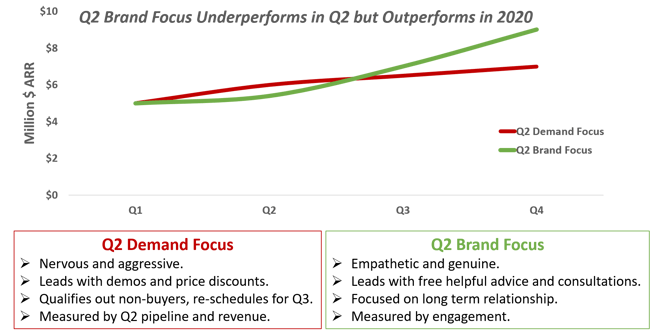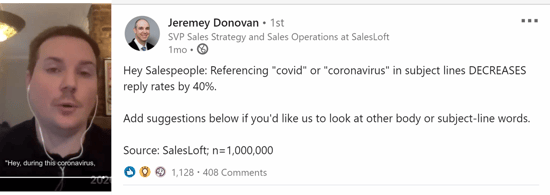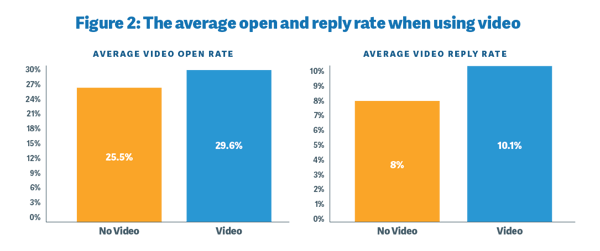Which demand generation tactics are most effective post market downturn?
In the below video, I discuss this question with Stage 2 Capital LP, Sydney Sloan, for insight. Sydney is the CMO of Salesloft, the #1 sales engagement platform that helps companies understand their customers' needs and respond in meaningful ways. Reflecting on experiments observed within her team and Salesloft’s 2,000+ customers, Sydney shared three demand generation tactics aligned with the post-market-decline buyer.
Competitive positioning in every product category is being re-shuffled. While your competition cuts their branding budget, take advantage and lean in.
As management teams look for cost cutting opportunities, Sydney warns against turning to cut brand budgets too quickly. Challenging times increase the opportunity for deeper connections with buyers. Furthermore, brand budget cuts by competitors yield lower costs and less noisy access to buyer mindshare. Play the long game and lean in on brand.
As we do, Sydney suggests more sensitivity in the brand-versus-demand trade off, especially in sales email cadences. Of course if a lead is conducting a competitive benchmark signaling a late stage in the buyer journey, meet the buyer where they are with product information and a product demonstration offer (see the G2Crowd-LinkedIn integration for app assistance here). However, in most cases, think about balancing the aggressive CTA with giving away high value best practices that build up your brand trust. Focus on an empathetic, genuine tone coupled with a helpful call to action. While an aggressive short-term demand approach will maximize Q2 results, we often under-appreciate the negative brand perception by non-buyers and corresponding negative impacts on Q3 and Q4 pipelines. Companies that lean into brand development in Q2, even at the cost of short term revenue outcomes, will likely generate tailwinds in the Q3 and Q4 pipelines, yielding a better 2020 and foundation for 2021.

Re-learn “What Matters” to each buyer persona. Use the insights to shift from high volume to high personalization.
Remember all of those customer interviews and paid A/B tests we did a few years ago to deeply understand our buyer personas and the messages they respond to? Well, those buyer preferences and corresponding message optimizations have shifted. It is our job to re-learn them, and as quickly, cheaply, and accurately as possible. Once we do, err toward personalization in the personalization-versus-volume tradeoff.
For example, Sydney’s team ran a test comparing their status quo messaging to a message around “COVID-19” and a messaging around “in these challenging times”. Interestingly, the COVID-19 performance was 40% lower than “in these challenging times”.

After qualitatively exploring the outcomes a bit, Sydney’s team concluded the buyer was a bit tired of the COVID-19 focus and wanted to hear how vendors could help. Therefore, their messaging started by addressing the elephant in the room by wishing everyone well but quickly pivoting to helpful advice relevant to the buyer’s unique context.
Video engagement is up, but apply it in follow on communication
Video engagement relative to other content mediums has been up over the past year across many buyer personas. Not surprisingly, this trend has accelerated in the post work-at-home context. Sydney recommends leaning in but not on the first cadence. Instead, use video as a third or fourth attempt if initial light-weight approaches didn’t work. Video is especially effective further down in the prospect engagement funnel as their appetite for higher engagement experiences increase.
 https://salesloft.com/resources/blog/video-sales-emails-increases-reply-rate/
https://salesloft.com/resources/blog/video-sales-emails-increases-reply-rate/
Thanks for these tips Sydney! Enjoy the video and feel free to add any follow on questions you may have for her.


